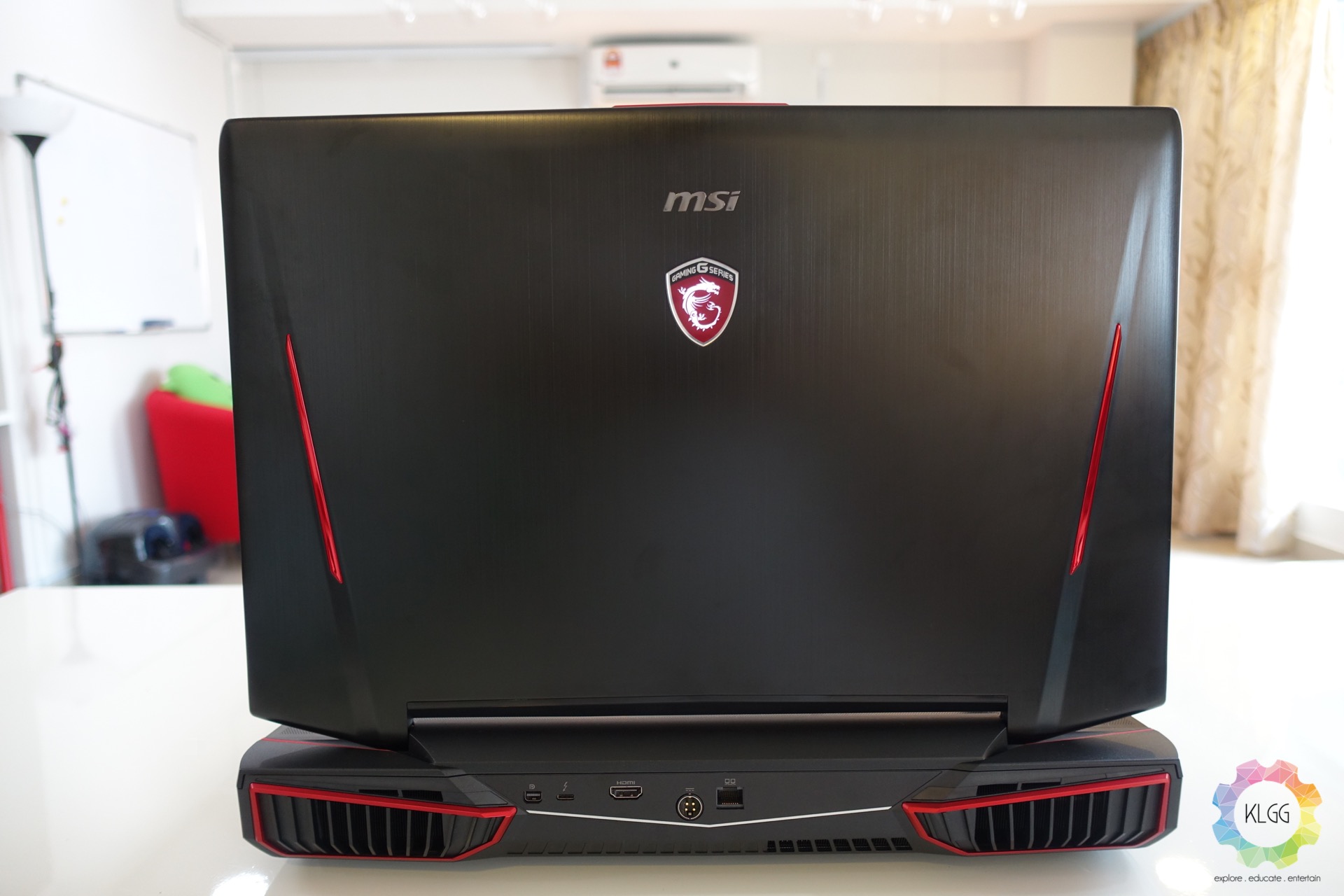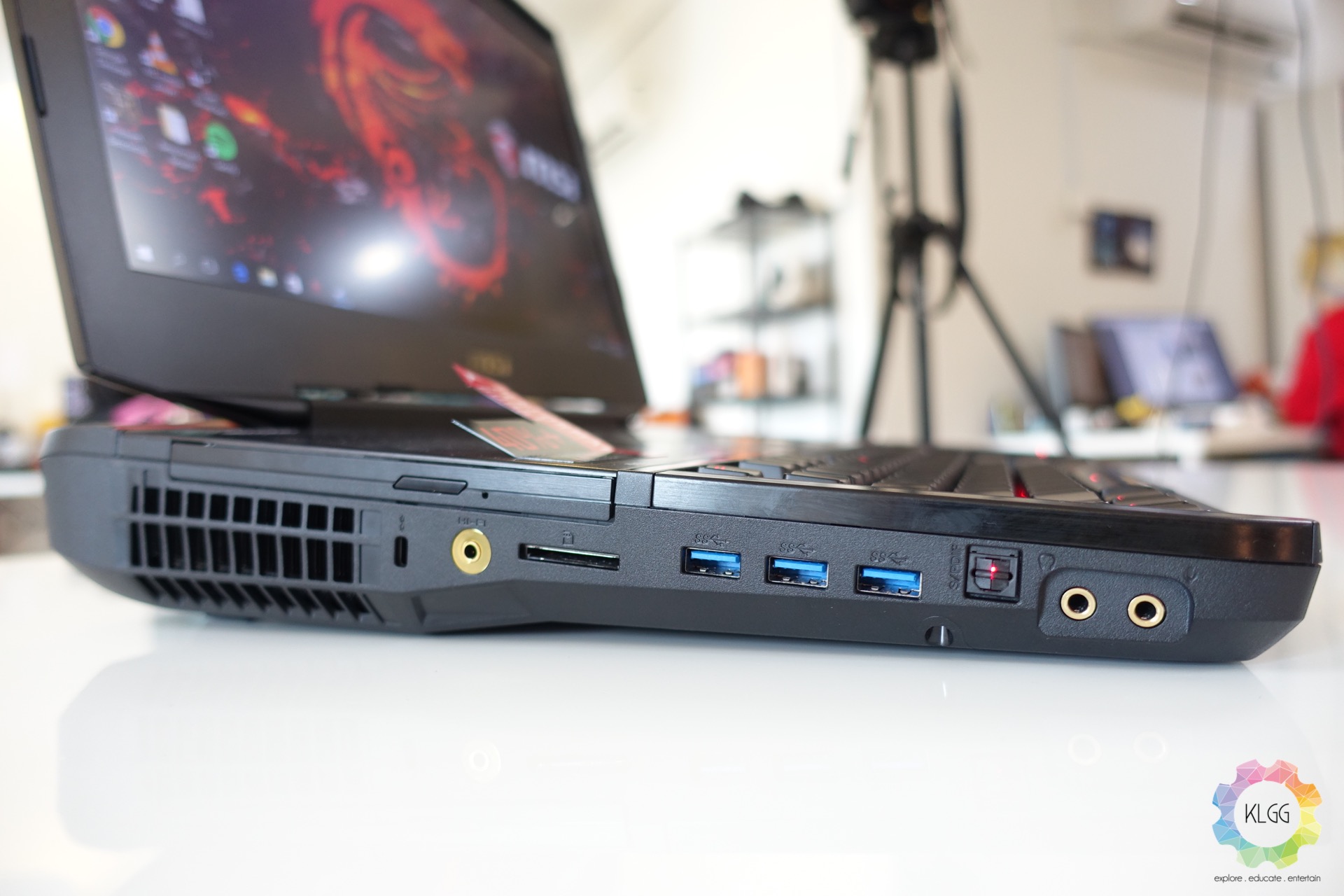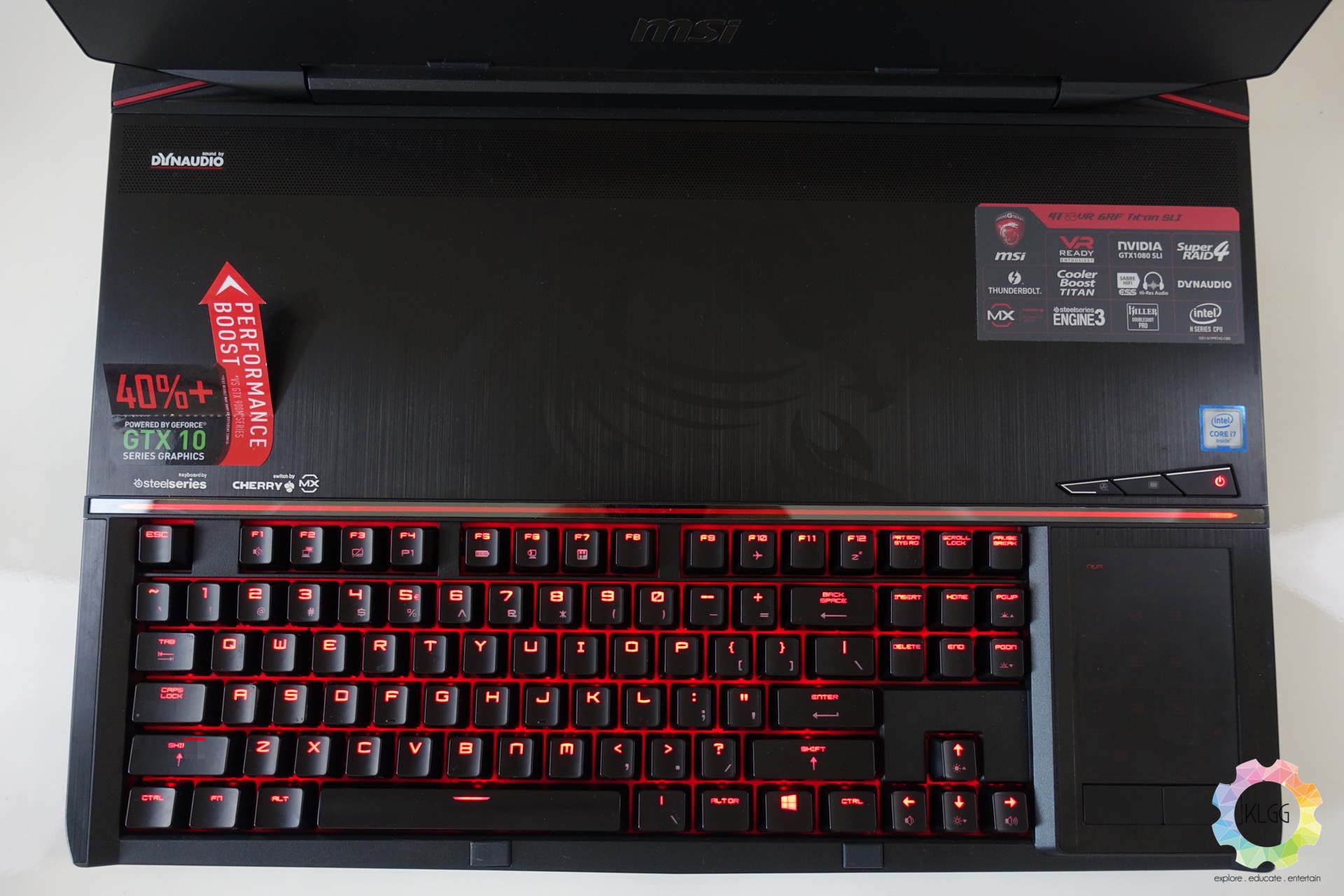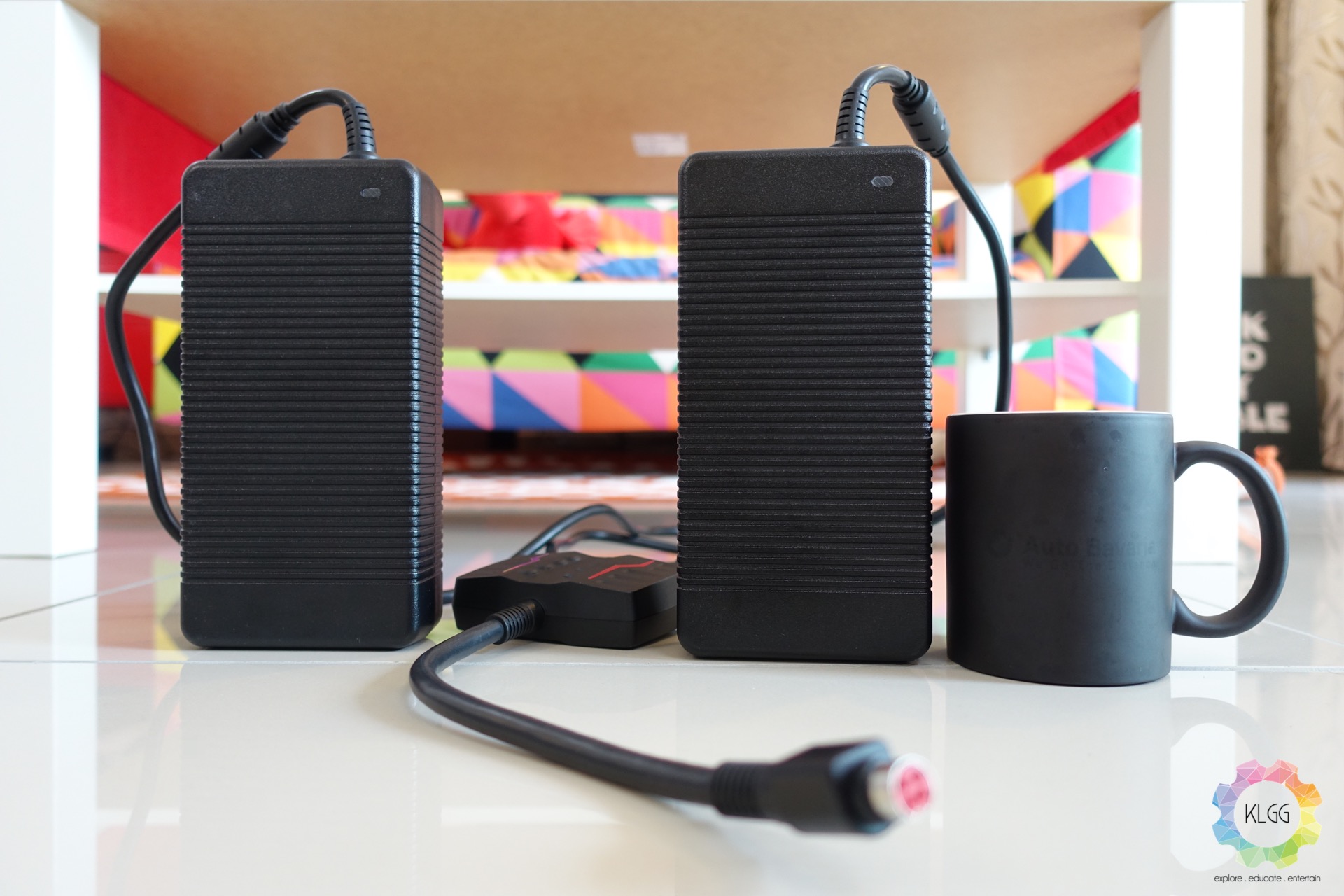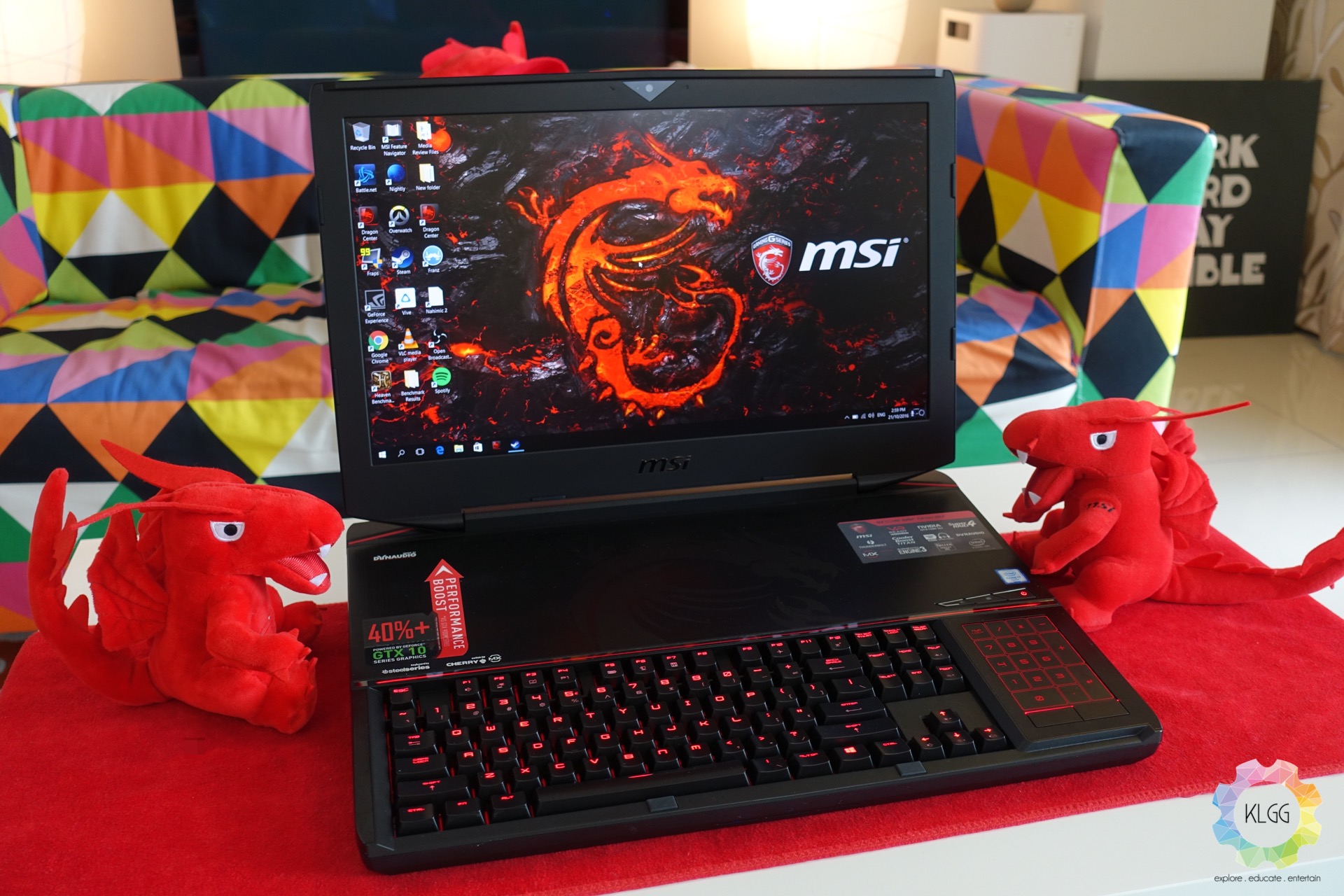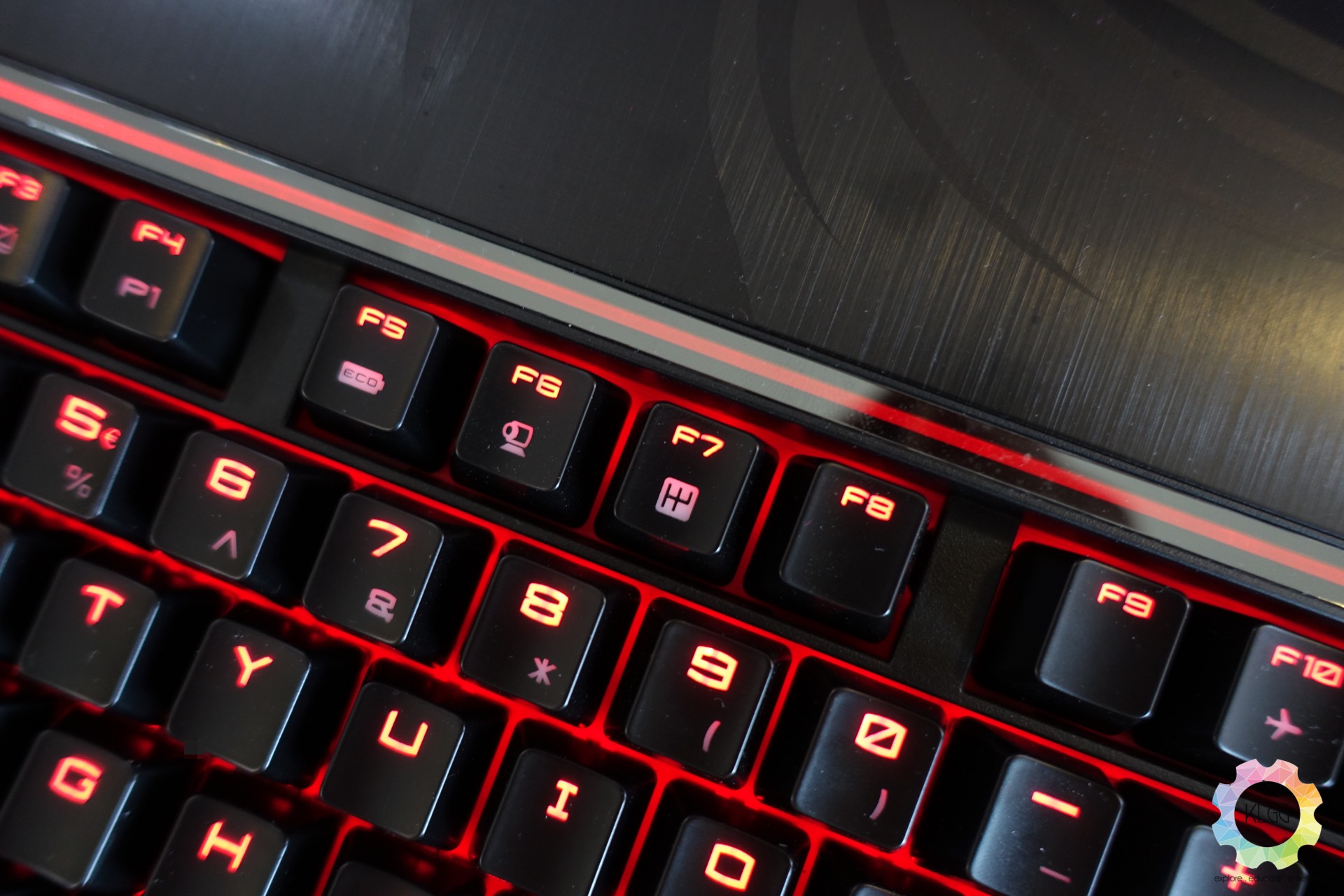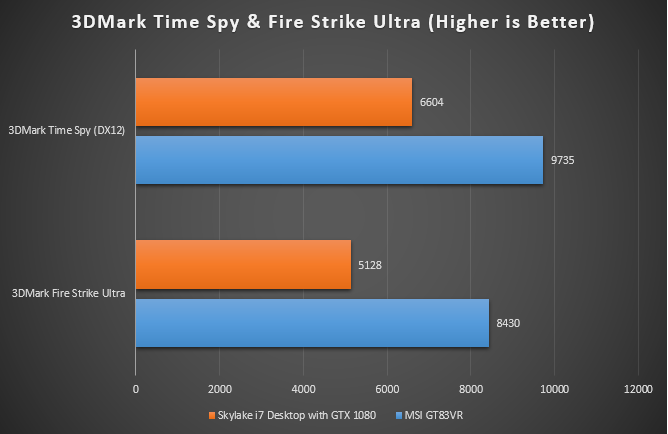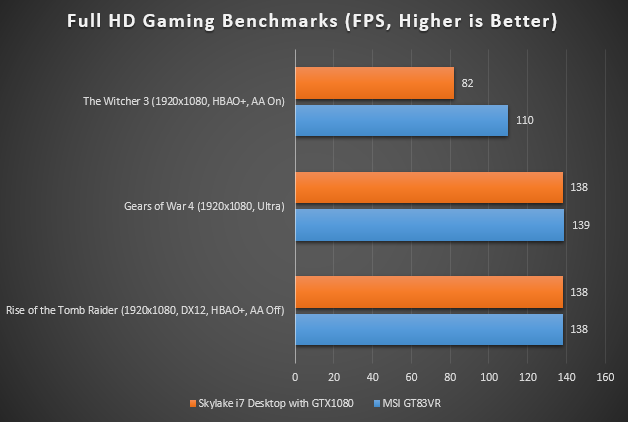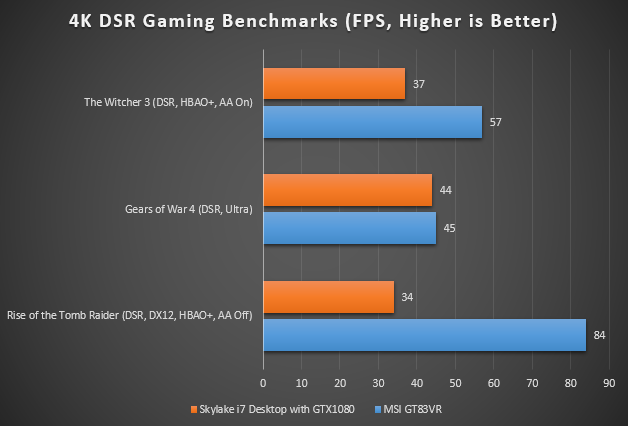If you aren’t stationed at your desk most of the time or have space constraint around your room, chances are you might actually resort to buying a gaming laptop for playing games. Personally, my usual gripes would be travelling around too much and seriously wished that my MacBook Pro could have discrete graphics on it. But, what we are reviewing today isn’t exactly a portable laptop, the MSI GT83VR is a monstrously powerful laptop and it is so huge in size to be called a laptop, this is technically a desktop replacement or you can even call it a powerful all-in-one PC. MSI continues to believe that there is a demand for gaming laptops with a built-in mechanical keyboard, but the GT83 is just more than just being a ridiculously huge machine, which is why you should read this written piece and watch our video review of it.
Hardware
Although the GT83 isn’t as flashy as other gaming laptops, it has the familiar black aluminum chassis that is found on its other siblings, lifting up the screen will require some strength from both hands, there’s two red LED strips and a MSI Gaming logo that lights up on the top when the laptop is turned on, MSI has also included a stylish red aluminum frame around the laptop’s cooling vents, overall the GT83 still has a rather aggressive gaming centric design, at least the additional styling doesn’t make this a ugly oversized device.
As a desktop replacement, the GT83 features a whole lot of ports that are more than sufficient for the average user, there’s four USB 3.0 ports, a Thunderbolt 3, USB-C, MiniDisplay, HDMI and an optical Blu-ray Disc Burner. In addition, the GT83 now features a HiFi audio port, which isn’t available on the previous GT80 and is powered by a ESS Sabre DAC that delivers 32-bit audio to high impedance listening devices, gamers who are particular about audio will definitely appreciate this hardware feature, though it is more useful in listening to lossless music files rather than gaming.
When I saw the GT80 last year, I thought a mechanical keyboard on a gaming laptop was rather ridiculous and I simply argued that gamers would always prefer to plug in an external mechanical keyboard if they really need to, I was wrong to assume that as I find it to be very useful when it comes to saving desk space. The GT83’s mechanical keyboard uses Cherry MX brown switches, it is one of my favorite switches when it comes to typing and doesn’t produce deafening clicks in the office, I like the red color LED backlighting but for those who wants to change colors, you are out of luck as MSI didn’t have RGB lights installed on it, thankfully you will still be able to adjust the LED brightness. On the other hand, MSI has cleverly included a capacitive numeric keypad onto its vertical trackpad and can be activated by tapping on the ‘Num Lock’ button, truth to be told its not really a useful feature as it isn’t responsive enough to fast fingers, but it will do for certain games that would require it at times.
Unlike its predecessor, the GT83 is a more powerful machine with two desktop class GTX 1080 GPU chips onboard and a Core i7 6820HK processor, the laptop is extremely power hungry that it requires two extremely heavy power bricks to charge its 8-cell battery, therefore I won’t recommend lugging around the GT83 for work unless you seriously want to train weights without heading to the gym. In the review period, I leave it on my desk all the time.
User Experience and Software
MSI’s gaming laptops have been well known for its speedy performance and the GT83 is no exception in this case, its Super RAID 4 configured solid state storage, extreme amount of RAM and the powerful Core i7 makes it a beast in its class. From my own perspective, I would say that the GT83 matches the performance of my personal Skylake Core i7 gaming PC.
I would be lying if the GT83 hasn’t enticed me to game more during the review period, even though I have been using it for my editorial work and e-mails, the mechanical keyboard is definitely one of the most enjoyable hardware on the laptop, be it typing or gaming, the feedback is good and I have not find the need to connect an external keyboard. Using the SteelSeries engine software, you will be able to record Macro keys and tune the backlight’s brightness.
Even though I have expected the GT83 to get really noisy during gaming due to its powerful hardware, I have made use of MSI’s SHIFT feature and have been using Comfort mode throughout the review period, it technically slows down the cooling fan speed to provide a comfortable experience and still whirs a little when the laptop is on its full load, the keyboard and trackpad area also remains cool all the time, which I assume MSI to have separated them away from the laptop’s components.
MSI has been kind enough to pass us the HTC Vive to be tested with the GT83 and I have tested it with NVIDIA’s VR Funhouse, the experience was really immersive and I have not felt nauseous after playing for 15 minutes, this is the effort of the dual GTX 1080 GPUs under the hood and NVIDIA’s VR pre-rendered frames feature, which helps to render frames fast enough to be output to any compatible VR headset and reduces the user’s dizziness.
As a desktop replacement, the GT83 has also been serving my entertainment needs rather decently, the 4+1 speaker system produces loud volumes that is usually sufficient for streaming Spotify and watching action movies, however when it comes to gaming it just doesn’t quite cut it, it lacks bass and doesn’t produce low frequencies well, gamers will immediately realize this when you hear explosions and gunshots, it is even more obvious when you listen to EDM music.
I have kept the GT83 plugged into the power source when I’m using most of the time, due to this I almost forgot the fact that it has an 8-cell battery to power the laptop’s monstrously powerful hardware, ironically this is rather helpful if you do not want your gameplay to die halfway when you encounter electric breakdown, however you shouldn’t put too much faith in it as the laptop merely lasted 100 minutes in my Full HD video loop test, therefore gaming on the laptop’s battery would probably slash that figure to half or more depending on the game’s graphic requirements.
At the end of the day, the GT83 is never intended to be a portable gaming machine, but it has proven to be a portable powerful desktop that can achieve any resource demanding task if you can handle its 5.5kg weight and two heavy power bricks, otherwise if I were to own the GT83, I’d most probably leave it at my desk as long as it could serve me.
Synthetic Benchmarks
I have taken the opportunity to perform synthetic benchmarks on both the GT83 and my Skylake gaming desktop, the results are rather interesting between the two.
MSI GT83VR Titan SLI Hardware Specifications
Processor: Intel Core i7-6820HK 2.7GHz, turbo boost to 3.6GHz
RAM: Kingston 8GB*4 SODIMM DDR4-2400
Storage: 512GB M2.SATA Super RAID 4, 1TB 7200RPM HDD
GPU: NVIDIA GeForce GTX 1080 8GB SLI
Skylake PC Test Bench Hardware Specifications
Processor: Intel Core i7-6700K 4.0GHz, turbo boost up to 4.2GHz
RAM: Kingston HyperX 8GB*2 DDR4-2666
Motherboard: Gigabyte Z170X-Gaming Ultra
Storage: Apacer AS720 240GB/WD Blue 1TB 7200RPM
GPU: NVIDIA GeForce GTX 1080 8GB Founders Edition
PCMark 8 Home Benchmark
The GT83 lacks behind the gaming desktop in this department, which is due to the processor clock frequency of both devices, the desktop’s Core i7 6700K has a higher base and turbo frequency at 4GHz and 4.2GHz respectively, as opposed to the GT83’s Core i7 6820HK processor’s base and turbo frequency at 2.7GHz and 3.6GHz respectively, however in real world performance you will not be able to tell the difference.
3DMark Fire Strike Ultra & Time Spy DX12
All thanks to the dual GTX 1080 SLI GPUs, the GT83 managed to outperform the gaming desktop with a single GTX 1080 GPU in 3DMark.
Gaming Benchmark
We picked Rise of the Tomb Raider, Gears of War 4 and The Witcher 3 for benchmarking these two machines. In 1080p resolution game play, both of them managed to produce the same FPS result in both Rise of the Tomb Raider and Gears of War 4, the GT83 however managed to produce more frames in The Witcher 3 and I assume it to be better optimized for SLI graphics.
The GT83 started to shine when it comes to 4K resolution game play, I tested using NVIDIA’s DSR in both machines and the GT83 produced almost two times more FPS in Rise of the Tomb Raider and The Witcher 3, while they still performed rather poorly on Gears of War 4.



